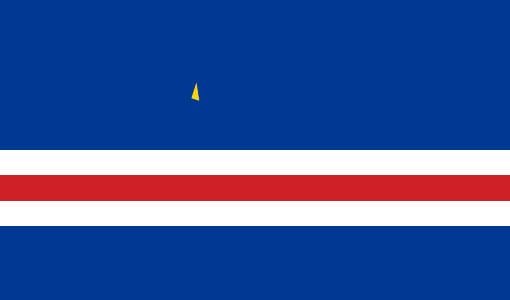Population 498,897 (2013) GNI per capita 6,210 PPP dollars (2013) | Life expectancy 74.54 years (2012) Population growth rate 0.9% annual change (2013) | |
 | ||
Fertility rate 2.33 births per woman (2012) | ||
This article is about the demographic features of the population of Cape Verde, including population density, ethnicity, education level, health of the populace, economic status, religious affiliations and other aspects of the population.
Contents
- Map of Cape Verde
- Population
- Vital statistics
- Fertility and births
- CIA World Factbook demographic statistics
- Median age
- Urbanization
- Sex ratio
- Life expectancy at birth
- HIVAIDS
- Genetics
- Ethnic groups
- Religions
- Languages
- Literacy
- References
Map of Cape Verde
Cape Verde has a population of more than 500,000 inhabitants, divided evenly of those who live in the islands and the ones who live abroad in the Cape Verdean diaspora in mainland Africa, Europe, U.S., Brazil, et cetera. A large proportion (236,000) of Cape Verdeans live on the main island, Santiago.
The archipelago of Cape Verde were first found and claimed by Portuguese sailors working for the Portuguese Crown in 1456. Subsequently, enslaved Africans and Portuguese convicts were brought to the islands to work as agricultural field hands. As a result of the intermingling and genetic liaison of the said populations, some of the present day Cape Verdeans are considered mulattoes, who have mixed black and white origins. European ancestors also include Spanish, Italian and French seamen who were granted land by the Portuguese Empire, followed by Portuguese settlers, exiles, and Portuguese Jews who were victims of the Inquisition yet perpetrated slavery. Many foreigners from other parts of the world settled in Cape Verde as their permanent country. Most of them were Dutch, French, British (English), Arab and Jewish (from Lebanon and Morocco). All of these have been absorbed into the mixed population.
The high degree of genetic mixture of individuals is a result of centuries of migration. It is not unusual to encounter persons with dark skin, blond hair, and blue eyes, and persons with seemingly light caucasian skin and textured curly hair.
Survival in a country with few natural resources has historically induced Cape Verdeans to emigrate. In fact, of the more than 1 million people of Cape Verdean ancestry in the world, only a little more than one-third actually live on the islands. Some 500,000 people of Cape Verdean ancestry live in the United States, mainly in New England. Many people of Cape Verdean ancestry also live in Portugal, Netherlands, France, Italy, Mexico, Uruguay, Argentina, and Senegal. Cape Verdean populations also settled Spain, Germany, Canada, and other CPLP countries (Angola, Brazil and Guinea-Bissau). Since after independence from Portugal in 1975, a number of Cape Verdean students continued to be admitted every year at Portuguese high schools, polytechnical institutes and universities, through bilateral agreements between the Portuguese and Cape Verdean governments.
Portuguese functions as a state language. Virtually all formal documents and official declarations are stated in Portuguese. But it is not the first language. Cape Verdean, commonly called Creolo, is spoken as a mother tongue by virtually all Cape Verdeans, irrespective of social status or religious affiliation. Moreover, historical linguists often attribute Cape Verdean Creole as the oldest "New World" contact language. It is a "contact" language in the sense that it was birthed and evolved between linguistically different groups who, by necessity, had to create a common language to communicate with each other. There is a rich repertoire of literature and songs in Cape Verdean Creole. In religion, the majority of Cape Verdeans follow Roman Catholic Christianity. There are some Protestants, Bahá'ís and Muslims.
Population
According to the 2010 revision of the World Population Prospects the total population was 496 000 in 2010, compared to only 178 000 in 1950. The proportion of children below the age of 15 in 2010 was 31.8%, 62.3% was between 15 and 65 years of age, while 5.9% was 65 years or older.
Vital statistics
Vital events of Cape Verde are not (yet) available for recent years. The Population Department of the United Nations prepared the following estimates.
Births and deaths
Fertility and births
Total fertility rate (TFR) (wanted fertility rate) and crude birth rate (CBR):
Fertility data from 2005 (DHS Program):
CIA World Factbook demographic statistics
The following demographic statistics are from the CIA World Factbook, unless otherwise indicated.
Median age
Total: 23.1 yearsMale: 22.3 yearsFemale: 23.9 years (2012 est.)Urbanization
Urban population: 60% of total population (2008)Rate of urbanization: 3.5% annual rate of change (2005-10 est.)Sex ratio
At birth: 1.03 male(s)/femaleUnder 15 years: 1.01 male(s)/female15-64 years: 0.97 male(s)/female65 years and over: 0.58 male(s)/femaleTotal population: 0.95 male(s)/female (2009 est.)Life expectancy at birth
Total population: 71 yearsMale: 68.78 yearsFemale: 73.27 years (2012 est.)HIV/AIDS
Adult prevalence rate: 0.035% (2001 est.)People living with HIV/AIDS: 775 (2001)Deaths: 225 (as of 2001)Genetics
E1b1a, R1b
The predominance of west African mitochondrial DNA haplotypes in their maternal gene pool, the major west African Y-chromosome lineage E3a was observed only at a frequency of 15.9%. Overall, these results indicate that gene flow from multiple sources and sex-specific patterns have been important in the formation of the genomic diversity in the Cabo Verde islands.